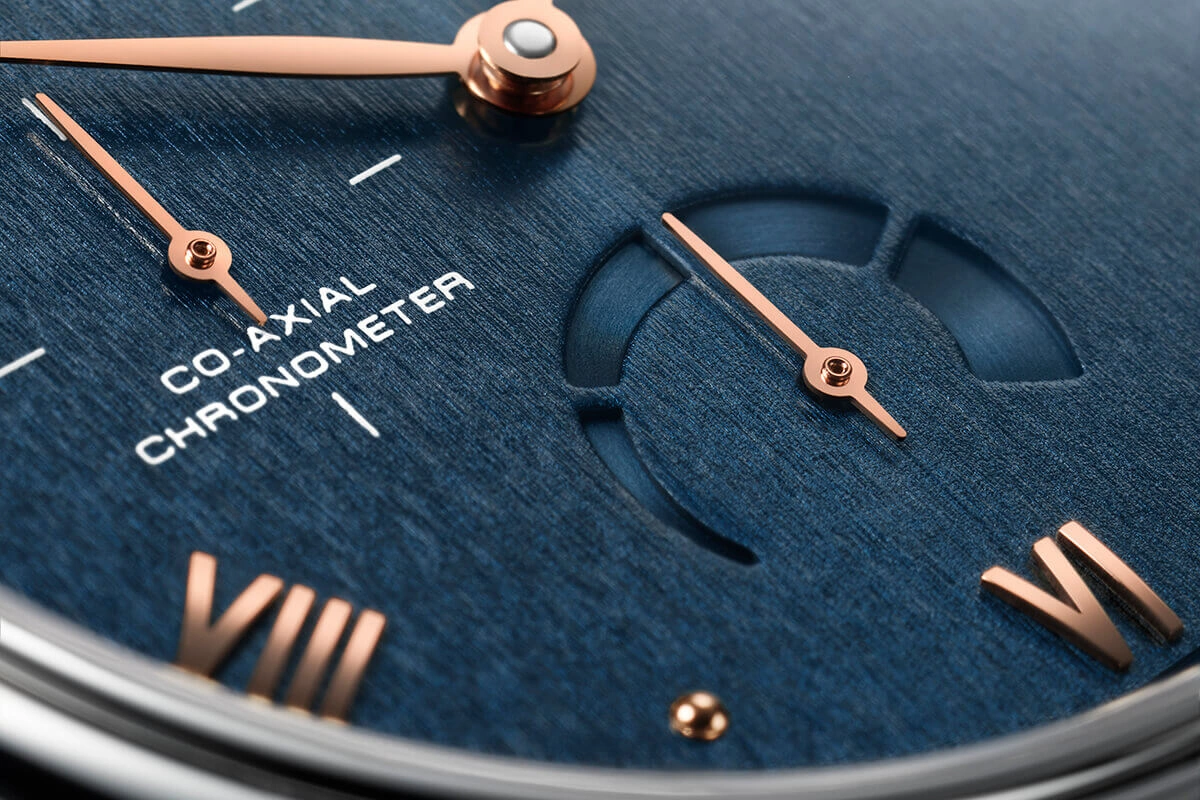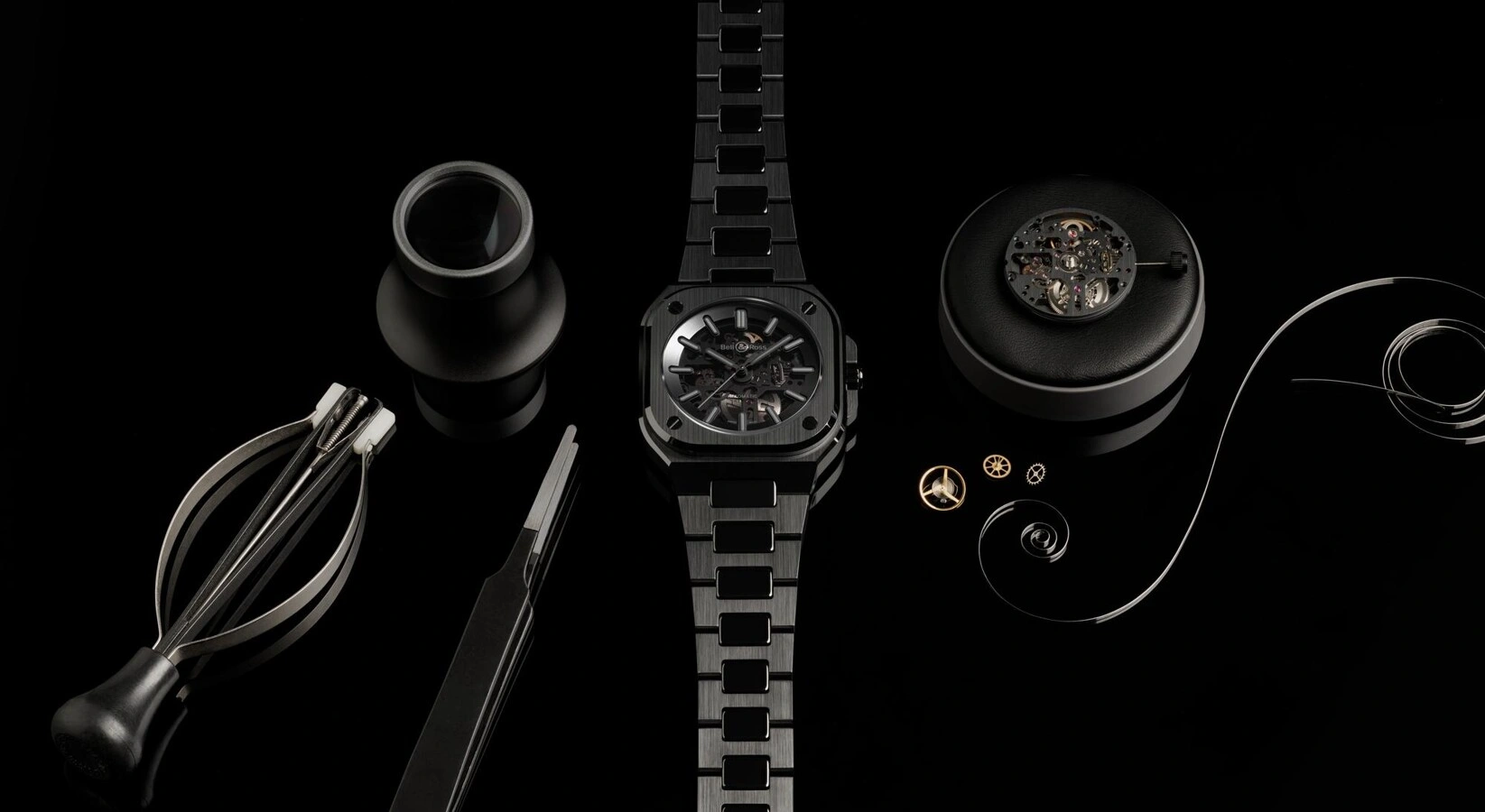- Curated by Cortina
- Watch Feature
- Watch Guide
Why The Power Reserve Indicator Is a Brilliant Complication
31 Dec 2023

One of the quintessential features of a mechanical timepiece, be it automatic or hand-wound, is power reserve. To keep the watch ticking, energy is required to turn the constellation of wheels of a movement that drive the hands. But unlike a battery-powered quartz watch, a mechanical timepiece is dependent on its power reserve. The amount of power reserve is typically expressed via the number of hours or days. For example, a movement bearing 42 hours of power reserve can be understood as such that the movement of the timepiece when fully wound will continue operating for approximately 42 hours. Once it is depleted, the watch stops.
To revive the watch, a fresh impetus of energy input is required. With a hand-wound timepiece, also known as manual-winding, the action is self-explanatory – by winding the crown yourself. On the other hand, with an automatic timepiece, power reserve is continuously replenished via kinetic energy generated by wrist movements, though you may also manually wind an automatic timepiece.
To ensure the timepiece always has a readily-available energy source, a mini reservoir is created. Coiled and housed in a barrel, this power supply is called the mainspring. As the mainspring is wound, tension increases exponentially. Then as it gradually unwinds, it generates torque to breathe life into other mechanical parts. This is power reserve in a nutshell.
Nonetheless, there are a multitude of variables that influence the power reserve of a timepiece. An intricate mechanism or complication consumes more energy due to increased mechanical parts. Complex timepieces comprising many moving parts such as automaton, perpetual calendar, chronograph and jumping hour models are significantly “power hungrier” than a simple three-hand model. Another factor is the frequency of the movement (the higher it is, the more energy is expended). If the mainspring remains unchanged despite increasing demands, there will naturally be less power reserve available for the timepiece.
Watchmakers frequently work within this equation to push out a respectable amount of power reserve while still keeping the timepiece to an ergonomic proportion. It is a wristwatch after all. To overcome this challenge, various brands have put forth their ingenious design ideals to keep power reserve up and size down over the years.
By elongating the mainspring, it enables a simple three-hand timepiece to run longer, or a complex timepiece’s power reserve to meet certain expectations. A longer mainspring may necessitate inflating the size of the standard barrel. Another popular proposal is doubling up on the number of barrels, if not more. These barrels are placed side by side or stacked in a serial arrangement (whereupon the first mainspring is fully wound, it begins to tighten its counterpart), thereby increasing the total length of the mainspring. Of course, there are other concepts too.
On a skeleton watch, the mainspring barrel is conspicuous and you can observe the mainspring’s unravelling. It means there is less tension and thus diminishing power reserve. On a timepiece with a proper dial, however, the mainspring barrel is typically concealed. So how can you tell what is the remaining power reserve? The answer lies in the power reserve indicator that tracks the tension of the mainspring. Although it is one of the lesser-talked-about complications and not all watches are fitted with it, it is especially practical. Thanks to a burgeoning number of timepieces equipped with linear and non-linear power reserve indicators, knowing when to wind your watch has never been easier.
Timepieces with power reserve indicators and ingenious power reserve concepts:

Bell & Ross announces the arrival of its first COSC-certified movement with authority by bringing forth the power reserve indicator on the BR-X5 Black Steel. (Credit: Bell & Ross)
Bell & Ross
Since the introduction of the BR-X5 family, Bell & Ross has soared to greater heights with each unveiling. Among the latest is the contemporary sports watch arrayed with a practical power reserve indicator. The incorporation of this complication is made possible thanks to the Kenissi-designed and -manufactured movement, BR-CAL.323, for Bell & Ross, enabling the BR-X5 Black Steel to be “weekend-proof” by virtue of the approximately 70-hour power reserve.

The excellent in-house movement of Blancpain’s Fifty Fathoms Automatique weaves the contemporary 4Hz frequency with 120 hours of power reserve. (Credit: Blancpain)
Blancpain
An emblematic timepiece for Blancpain, the Fifty Fathoms embodies the manufacture’s steadfast commitment to watchmaking innovation. The original Fifty Fathoms debuted in 1953 was widely considered to be the first modern dive watch and that attitude of demanding constant improvement has been preserved till today, where the current Fifty Fathoms Automatique continues to set the benchmark for dive watches. At 120 hours provided for by a trio of mainspring barrels, the staggering power reserve of the automatic Caliber 1315 speaks of Blancpain’s reputation as a respected watchmaker.

Chopard’s Alpine Eagle 41 XPS is a certified chronometer, while its exquisite movement is recognised by the Poinçon de Genève. (Credit: Chopard)
Chopard
Chopard’s interpretation of the modern timepiece with integrated bracelet, Alpine Eagle 41 XPS, epitomises the brand’s dedication to watchmaking not only in aesthetics but also metallurgy. Crafted from Chopard’s exclusive, ultra-resistant Lucent Steel, the timepiece boasts a textured dial unique to the Alpine Eagle collection. Underneath lies greater excellence, with 65 hours of power reserve guaranteed by the in-house L.U.C 96.40-L movement derived from the patented Chopard Twin technology, drawing upon two stacked barrels.

The Franck Muller Vanguard New Tone Skeleton is made available in men’s versions, as well as ladies’ models which are further embellished with black diamonds. (Credit: Franck Muller)
Franck Muller
Inspired by Isaac Newton’s theory on the visible spectrum of light, Franck Muller judiciously endows the carbon fibre-attired Vanguard New Tone Skeleton with a bold, iridescent palette, accomplished via metal oxide coatings known as Spectracoat. The prolific skeleton watch maker dedicates each version from the series to one of Newton’s primary colours. In addition, the metal oxide-coated bridges of the manual-winding open-worked movement take on different colours under various lighting and ambience conditions, including the 7-day power reserve indicator positioned at 8 o’clock for the men’s collection.

Glashütte Original’s PanoReserve features a small hand that glides from AUF to AB, signalling a dwindling power reserve of 42 hours. (Credit: Glashütte Original)
Glashütte Original
The usefulness of the power reserve indicator is elevated in the Glashütte Original PanoReserve, a manual-winding timepiece beating the exquisite Calibre 65-01. Understated elegance comes to mind where the beloved navy blue dial is demarcated into a bevy of subdials, presenting time in the most enchanting manner, while the observable in-house movement highlights the brand’s Glashütte provenance, splendidly embodied by the striped three-quarter plate and the richly decorated neck swan adjustment and balance cock.

The unmarked power reserve indicator of H. Moser & Cie.’s Endeavour Perpetual Calendar is positioned at 9 o’clock. (Credit: H. Moser & Cie.)
H. Moser & Cie.
Independent watch brand H. Moser & Cie. has always blazed its own trail when it comes to producing its own interpretations of prevailing complications. None more so than the whimsically minimalist Endeavour Perpetual Calendar that pares down on the excess details on the dial. On the flip side, the acclaimed and magnificently orchestrated HMC 800 manual-winding movement exhibited on the transparent caseback is where the watchmaking know-how of H. Moser & Cie. shines through, impressing with 168 hours of power reserve drawn from a double barrel.

The Montblanc Star Legacy Nicolas Rieussec Chronograph sets itself apart from other chronographs with rotating discs acting as chronograph counters.
Montblanc
Did you know the first-ever chronograph resembled not a wristwatch but a boxy apparatus? Since 2007, Montblanc has been on a journey to celebrate creator Nicolas Rieussec’s legacy with a collection named after the French royal watchmaker and whose designs are inspired by his breakthrough. The distinctive layout of the Montblanc Star Legacy Nicolas Rieussec Chronograph is distinguished with two subdials on the lower half of the dial, forming a pair of rotating discs in lieu of moving hands. Powering the chronograph is the automatic Caliber MB R200, rated for approximately 72 hours of power reserve supported with the double-barrel construction.

OMEGA’s METAS-certified De Ville Prestige Co-Axial Master Chronometer Power Reserve 41mm is available in stainless steel, yellow gold and Sedna gold. (Credit: OMEGA)
OMEGA
The De Ville Prestige showcases OMEGA’s watchmaking prowess with an in-house movement featuring the proprietary Co-Axial escapement that promises enhanced reliability. Since debuting in 1994, the collection now in its third generation continues to exude a timeless appeal, where form is treated equally as important as function. This ethos is best exemplified with the 270-degree power reserve indicator located at 6 o’clock, pointing towards 55 hours of power reserve when fully wound.

Parmigiani Fleurier produces the Tonda PF Automatic in a variety of sizes, complications and materials. (Credit: Parmigiani Fleurier)
Parmigiani Fleurier
Petite in proportion yet packing a knock-out punch, Parmigiani Fleurier’s latest Tonda PF Automatic is offered in a stunning 36mm complete with the manufacture’s signature motifs, namely the Grain d’Orge (barley grain) guillochéd dial and a pair of skeletonised delta-shape hands. At the heart of the elegant timepiece is the Caliber PF770 delivering 60 hours of power reserve, provided by a serial-mounted double barrel. The uncompromising approach epitomises Parmigiani Fleurier’s dedication to producing exceptional timepieces across a spectrum of sizes and references.

Zenith offers the DEFY 21 Chroma II in black and white matte ceramic, each limited to 500 pieces. (Credit: Zenith)
Zenith
With great power comes great responsibility, and when the chronograph is capable of measuring 1/100th of a second, which requires considerable energy to operate and at risk of prematurely exhausting the timepiece’s primary power reserve, Zenith has had to rethink conventional watchmaking wisdoms in order to achieve what few others have done. To ensure there is sufficient energy for timekeeping and the chronograph separately, Zenith doubles the escapements for the DEFY 21 Chroma II’s El Primero 9004 self-winding movement. It sets aside 50 hours of power reserve for timekeeping at 5Hz, while the chronograph which runs on 50Hz receives 50 minutes. The power reserve indicator located at 12 o’clock forewarns the remaining power reserve for the chronograph function.







